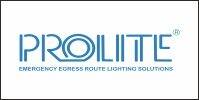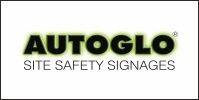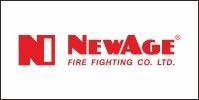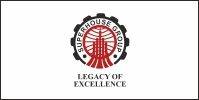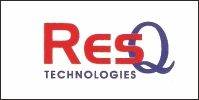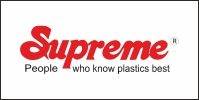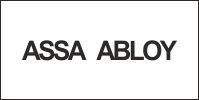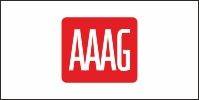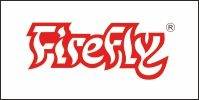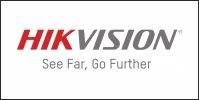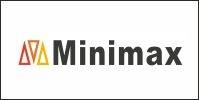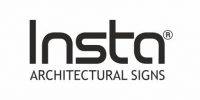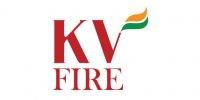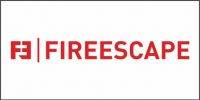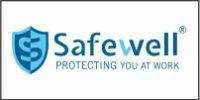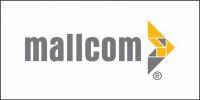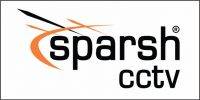 As mission critical fire protection experts, we’re always looking for ways to educate our audience on all-things mission critical. In our latest webinar series, we teach you about clean agent systems in fire suppression with a special feature on MCFP insights relevant to specific regions across the U.S. Now you can access this webinar on-demand to gain more insights on clean agent systems in fire protection.
As mission critical fire protection experts, we’re always looking for ways to educate our audience on all-things mission critical. In our latest webinar series, we teach you about clean agent systems in fire suppression with a special feature on MCFP insights relevant to specific regions across the U.S. Now you can access this webinar on-demand to gain more insights on clean agent systems in fire protection.
WHAT’S IT ABOUT?
This overview of clean agent fire suppression systems by Lee Kaiser—ORR Protection’s VP of Engineering—defines clean agents, their applications and when to use them in mission critical facilities. New code changes will also be reviewed.
WHAT WILL YOU GET?
Watch the webinar or read through the content below to learn more about clean agent systems in fire suppression. In the each Clean Agent Systems webinar, Lee will be followed by regional experts discussing the use of clean agents in your area. These regional experts will talk about the most popular clean agents, regional certifications needed for install and maintenance, the future of clean agent fire protection in your region and more.
CLEAN AGENT SYSTEMS
Welcome to our Webinar on clean agent fire suppression systems where today we’re going to update you on what’s new with clean agents and , how to use them in your facility. But first I want to talk a little bit about who or protection is. We are the nation’s leading service provider for mission critical fire protection facilities. We do fire alarm systems, detection systems and suppression systems, and special hazards for buildings that really need fire protection to work. We’ve been a quality fire protection provider since 1971. That’s when we started as a company; we’re America’s largest privately owned fire and safety company. We protect over $30 billion in assets nationwide against fire. We provide nationwide service and, we have a coast to coast coverage to be able to get to your facility and get a technician there if you’ve got a problem and need a fix. We service over 30,000 systems in the United States, and some of the suppression systems that we are a experts at–FM 200–you’ll notice that name Novec 1230, another one that’s very recognizable in addition to a number of others.
These are a list of some of our premier providers, partners with us that we install and maintain their systems. The way we structure our business is for service systems and net systems for service systems. We’ve got experience where it counts. One call for a single point of contact for national accounts effective in service. We’re an ISO 9001: a quality company certified to that standard, available 24/7. Our average technicians have over eight years of experience. Our trained technicians have vans that are stocked so we can get out there and fix it the first time. With net systems online reporting, our customers enjoy the benefit of net site. That’s an online web portal so they can access records about their fire protection systems through the net site website. We also spend a lot of time providing information to the industry and to consumers of fire protection systems. We blog, and on our blog you’ll find expert level advice, answers to current problems and hot topics. So as we get started today talking about clean agent fire suppression systems, I like always to start with the chance to go through a little bit of fire science.
There are three commonly recognized levels of fire protection system performance that we like to educate about. And the first one we’ll start with is fire control. Fire control is a technique where you limit the size of a fire such that if it’s in a compartment or room, it doesn’t grow so big that it can cause a flashover condition inside the room. Flashover is a very severe fire event where everything, every surface in the room that’s combustible spontaneously starts burning because so much heat is built up into the room. So in fire control, we cool the fire down before it could get to that flashover point. This is really what sprinkler systems do, but now sprinkler systems are listed for fire control, and we don’t necessarily expect that they’re going to put out the fire.
The fire department may have to show up and extinguish that fire for that final extinguishment via hose lines. The next is fire suppression. This is a performance expectation–and we say that word suppression a lot. So the actual performance expectation of suppression is that when the automatic system discharges, it reduces the rate of combustion down to just glowing combustion. So if you’ve got class A solid fire materials, and fire suppression acts on it, you expect that the fire department or a responsible person would come in with maybe just a fire extinguisher to finish off that fire and achieve complete extinguishment. And that leads us to the last definition of fire: Extinguishment. Fire extinguishment is where the suppression system or fire extinguishing system, when it discharges the performance expectation is that there’s no combustion after that.
The fire goes completely out and, there’s no manual firefighting required to extinguish that fire. Those are the performance levels: Fire control, fire suppression, fire extinguishment. And as you go through that, the expectation for what the system does on the fire goes up. With clean agent systems, they are listed for fire extinguishment. This is the quick slide on the basics of clean agent fire suppression systems. Clean agent systems are extinguishment without water. They’re gaseous systems usually arranged in a total flooding arrangement. Gaseous systems means they’re a gas that goes into space, a compartment or room, with total flooding. We flood the space with gas so that no matter where the fire is, the fire’s going to go out.
We flood the space floor to ceiling, wall to wall. They’re fast and effective. They’re fast in two ways. They’re fast because we activate them using smoke detection when the fire is small so they can act on the fire quickly. Then, after discharge, they usually extinguish the fire within 20 to 30 seconds. That’s a fast extinguishment. Compared to all the other fire suppression systems out there, clean agent systems are in that very fast-acting category. And they’re effective. They put the fires out. They’re also safe for equipment and personnel. For equipment, clean agent systems are electrically nonconducting. Unlike water, they won’t ruin electrical components or electronics in the space–that’s the clean piece.
They leave no residue. There’s no cleanup after a fire or a clean agent system discharge. No water to clean up, no powders or anything to clean up. Clean agents are clean, and that’s why they’re so great for electronics. But there is a five minute exposure limit. In order to be a clean agent listed or allowed as a clean agent system, you can be in the room as a person where the clean agent system is. If it discharges, you can be inside the gas, but then the codes say that there’s a five minute exposure limit. The codes want a person to exit the space after five minutes due to the possible presence of products of combustion. That’s what the codes say. Most people, when they hear the warning sounds, they know to exit the space.
But what we want to emphasize is to exit that space calmly and orderly because it’s safe to be in there in the discharge. Most people want to get out before that system goes off. Some other benefits include early activation while the fire is small, the gaseous nature of the agent penetrates all shielded spaces and into the components, and extinguish fires and minimize damage leaving little to no cleanup after the discharge. So where do we use clean agents? Well, we’d like to teach using this list of important factors. Two or more of this list. And clean agents should be a strong consideration for fire protection in the room. Sensitive electronics, things that could possibly get damaged by water spray, power distribution, if we’re bringing power to components inside a room, it’s potential for needing clean agents.
If the space is occupied, clean agents are one gas that can be used in occupied spaces. So, that’s another consideration. If the space is unoccupied, you maybe have some more options. But if it’s occupied, clean agents should be one of your choices. Shielded combustibles, electrical cabinets, raised floors, concealed spaces. Clean agents are often applied in rooms where there’s air flows, lots of air conditioning to cool the electrical equipment in a room. It’s critical to operations because of the low impact on downtime. Clean agents are important there and a low tolerance for fires. Any two or more of these you should be considering clean agents.
Let’s take a chance to talk about how a clean agent system works. We release clean agent systems in most applications with a releasing service fire alarm panel. Sometimes we call those a suppression control panel. In our diagram here, we’re going to start to talk about some of those things that are part of this diagram. The big red box in the middle is a suppression control panel, in this case, an intelligent suppression control panel. With that, we use an accounting zone detection technique for confirming detection of a fire. We want to have two detectors go off to confirm that we really have a fire before we release the system. In an addressable or intelligent system, we count the detectors going off before we begin the suppression releasing sequence. Before we start to show some smoke on the slide here, let’s add a couple more things to make it suppression system.
We have the big red tank, in this case, a clean agent system tank. Connected to that, we have a releasing circuit. That’s the circuit that powers the releasing device to send the gas out into the space. Now on that releasing circuit, we have a disconnect switch that’s a safety feature for servicing the system and a feature to help avoid unwanted discharges. Then, we have a pull station, in this case called a manual release station, for a person inside the room. If they see a fire, they can manually release the system by activating that pulse station. Let’s have a little smoke start at one of the smoke detectors. When smoke gets to one smoke detector, just like in any fire alarm system where there’s smoke detectors, it’s going to activate the building fire system.
We will activate the building fire alarm and the Horn strobes or other notification devices in the building will be going off at that time to warn people that there’s a fire in the building, but we’re not going to release the clean agent gas yet. We’re going to wait until the fire grows and we get confirming detection at a second detector. So let’s let the fire grow. As a fire grows, we catch a second detector and then a few more things start happening. The first thing, once we have second detection, we’re going to begin the releasing sequence. And so we have a programmable time delay, which is the pre-discharge warning time period. And so that’s what that stopwatch indicates. That’s a 30-second time delay before the gas goes off into the room that gives us time to warn people of that impending discharge.
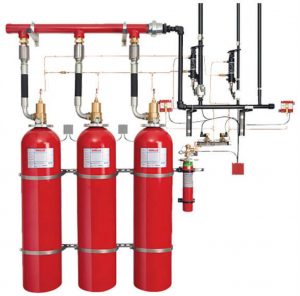 One way we do that is by adding the second notification device. It’s a pre-discharge warning alarm. It’s a distinctive sound inside the space warning people that the system is going to go off. If you hear that distinctive sound, then you know it’s time to exit space. Also, during that time we’re preparing the room for discharge. We’re going to be activating relay outputs to shut down the HVAC in the room so that the air handling shuts off shutdown dampers so we don’t dilute the gas in the space by bringing fresh air into the room or exhausting out of the room. Then shut down any power relays through shut trip breakers. Oftentimes we call that EPO or the emergency power off system. During that pre-discharge time period, we’ve got time to get those things shut down before the system releases.
One way we do that is by adding the second notification device. It’s a pre-discharge warning alarm. It’s a distinctive sound inside the space warning people that the system is going to go off. If you hear that distinctive sound, then you know it’s time to exit space. Also, during that time we’re preparing the room for discharge. We’re going to be activating relay outputs to shut down the HVAC in the room so that the air handling shuts off shutdown dampers so we don’t dilute the gas in the space by bringing fresh air into the room or exhausting out of the room. Then shut down any power relays through shut trip breakers. Oftentimes we call that EPO or the emergency power off system. During that pre-discharge time period, we’ve got time to get those things shut down before the system releases.
During that 30 seconds, if we’re an occupant of that protected room, if we notice there’s no fire or we don’t see smoke, we don’t smell smoke, we can’t see flames, that gives us an opportunity to go to the abort button. And if one is installed in the system, often located by the doors coming out of that protected room, you can go to the abort button, press it down and stop the system from discharging. Then you can pick up your phone and call someone, have them come into the room while you’re standing by the abort button, and they can do the investigation. If no fire is found, you can go to the releasing service fire alarm panel and reset the system, and that will prevent the system from discharging. Let’s say though that you don’t press the abort button, then after that 30 seconds expires, the releasing circuit will activate gas will out of the tank through the piping and out and the nozzles to flood the room with gas.
The last thing that will happen is a discharge alarm, which is a usually a visual device strobe on the outside of the room that’s labeled, “fire suppression discharge.” It warrants people coming to the room to check out what’s going on that the suppression system has discharged inside the space. That’s the usual arrangement of a sequence for a clean agent fire suppression system.
Now, I do want to highlight that there’s a little change in the industry where we’re using a single detector to release that. In that case we’re using Vesda air sampling smoke detection. Vesda is often applied in the same spaces that we use clean agent fire extinguishing systems. Because it’s asset protection, we’re worried about the processes and the equipment that’s in those highly valuable rooms.
Vesda gives us very early warning fire detection. It’s a technology that’s really immune to false alarms. In our experience across all the different sites that we service, we get very few false alarm calls for Vesda detectors. There’s other reasons we go out for a service on Vesda detectors, but very infrequently is that a false alarm condition. It’s a very stable, resistant to false alarm technology that can be cost effective. You want to get the benefits of very early warning fire detection while still releasing with your clean agent systems. One technique is to use the multiple levels of alarm that a Vesda detector gives you. A Vesda detector usually gives you four levels alarm, two of them are pre-warning signals and then two of them are actual alarm signals.
For pre-warning, we use the threshold settings of alert in action, and we bring those into our fire alarm system as supervisory warnings that you need to go check this out. There is smoke present, but it’s not at that life safety level that you need to be worried about. Then, as a smoke builds, we get to that life safety warning level at fire one. That’s where we would send a signal to the fire alarm panel or to our suppression panel to activate the fire alarm system throughout the building. We would wait for confirming detection until the fire builds more to a less sensitive threshold setting, meaning more smoke has to be in the space of fire two. That’s that force setting. When we get to fire two, that’s confirming an indication that we really have a fire in our room, and we can use fire two to be our second input to release the clean agent fire suppression system.












